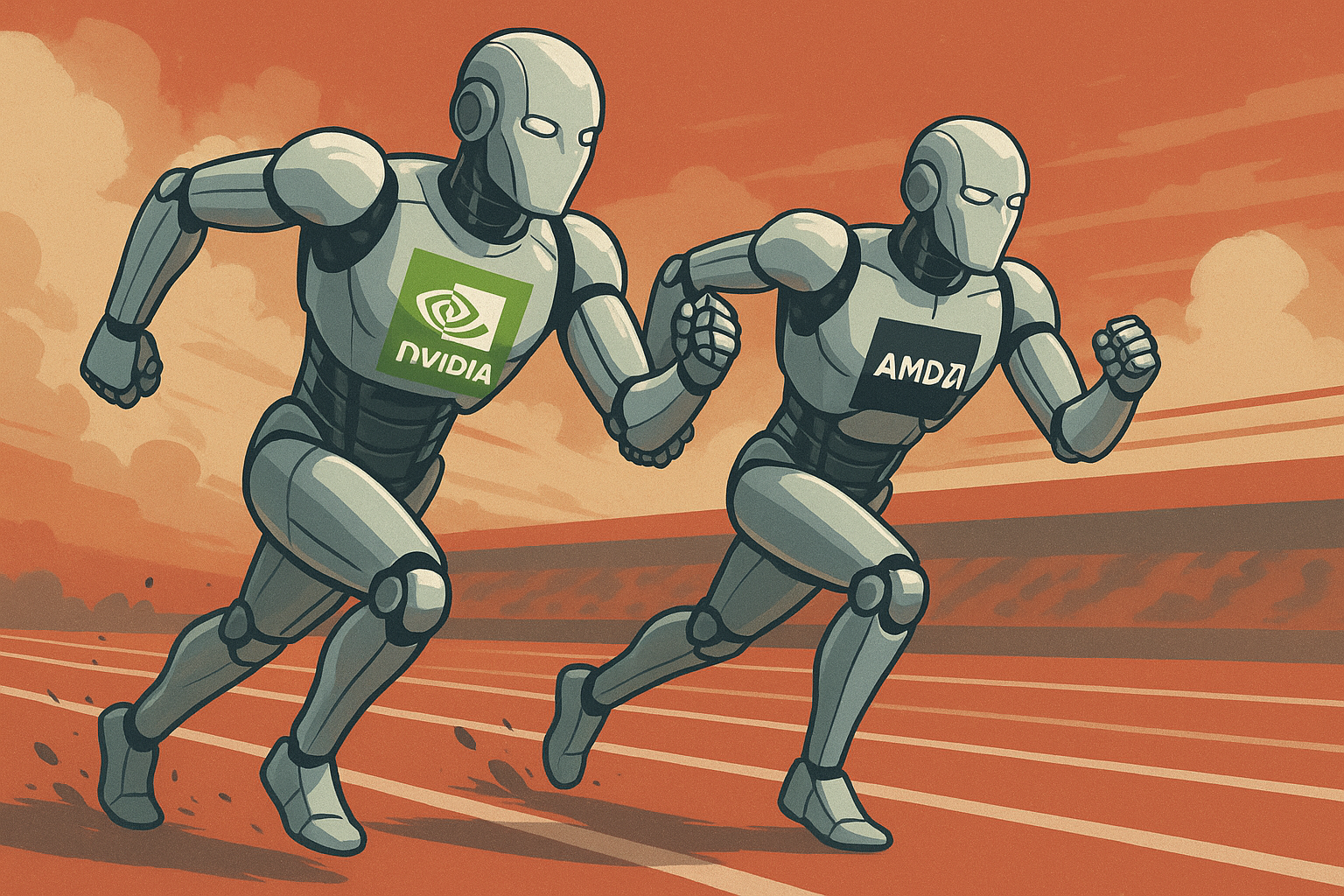
As artificial intelligence transforms industries at breakneck speed, few companies find themselves at the epicenter of this technological revolution like Advanced Micro Devices. For decades, AMD was known as the scrappy underdog in the chip world—an innovator that powered gaming PCs and data centers, but always trailing behind giants like Intel and, more recently, Nvidia. Today, however, the AI revolution has redrawn the semiconductor battlefield, and AMD (NASDAQ: AMD) is determined to be more than just a follower in the race for AI dominance.
The Stakes: Why AI Matters for AMD
Artificial intelligence isn’t just another “hot” market. The AI wave is fundamentally changing how chips are designed, produced, and deployed. GPUs (graphics processing units)—long a specialty of both AMD and Nvidia—are now the backbone of large AI models that power everything from generative chatbots to autonomous vehicles. The market for AI chips is projected to reach hundreds of billions of dollars in the next decade. Whoever dominates this market will help shape the digital future.
AMD recognizes this existential opportunity. The company’s CEO, Lisa Su, has steered AMD away from its historic PC-centric business model toward becoming a leader in high-performance computing and data center solutions. AMD’s acquisition of Xilinx in 2022 further bolstered its portfolio, giving it critical assets in adaptive computing, which is crucial for AI inference and edge applications.
AMD vs. Nvidia: The Technology Gap
For years, Nvidia has held a commanding lead in AI hardware. Its CUDA software ecosystem and high-performance GPUs have made it the go-to choice for AI researchers and cloud providers. Nvidia’s H100 and next-generation Blackwell chips are now the standard in AI training, propelling the company to a trillion-dollar valuation.
AMD’s AI journey, meanwhile, has been marked by a mixture of ambition and catch-up. While AMD’s MI300 series accelerators and Instinct GPUs have gained traction among select cloud providers and research institutions, they still lag Nvidia’s products in terms of both raw performance and developer ecosystem. However, the MI300A and MI300X accelerators—AMD’s most powerful AI chips yet—represent a serious challenge to Nvidia’s supremacy, especially in high-performance computing and memory bandwidth.
The Data Center Wars
Cloud providers and hyperscalers—Amazon, Microsoft, Google, Meta—are on the front lines of the AI revolution. Winning major design wins in these data centers can instantly propel a chipmaker into the big leagues. AMD has been making inroads: Microsoft Azure, for example, is offering virtual machines powered by AMD Instinct MI300X accelerators, giving customers an alternative to Nvidia’s H100.
One of AMD’s strengths is its willingness to embrace open-source software. By supporting standards like ROCm (Radeon Open Compute), AMD is building an ecosystem that could eventually rival CUDA’s lock-in, especially as enterprises seek alternatives amid chip shortages and soaring demand for AI hardware.
The AI PC Revolution
The AI race isn’t confined to the cloud. As demand for AI-powered applications trickles down to consumer devices, PC and laptop makers are seeking chips that can handle on-device AI processing efficiently. AMD’s new Ryzen AI processors, launched in 2024, mark the company’s first major push into AI PCs. These chips feature dedicated AI engines capable of accelerating generative AI workloads, speech recognition, and image processing—tasks that were previously handled in the cloud.
With major partners like HP, Lenovo, and Asus, AMD is betting that its next-gen CPUs and APUs will power a new wave of “AI PCs,” further expanding its footprint beyond traditional gaming and workstation markets.
Strategic Partnerships and Future Roadmap
No chipmaker can win the AI race alone. AMD has built a wide array of partnerships to accelerate adoption of its hardware. In the software space, the company is working with leading AI frameworks like PyTorch and TensorFlow to ensure compatibility and performance optimization for AMD hardware. Collaborations with cloud providers, as well as research institutions focused on supercomputing and scientific AI, further strengthen AMD’s position.
AMD’s future roadmap is ambitious: plans are underway for new GPU architectures, tighter integration with AI software stacks, and advanced chiplet designs that can compete with Nvidia’s latest offerings. By leveraging its experience in both CPUs and GPUs—and by capitalizing on the flexibility of its chiplet approach—AMD aims to address the full spectrum of AI workloads, from massive language models to edge AI in IoT devices.
Risks and Challenges
Despite its momentum, AMD faces steep challenges. Nvidia’s first-mover advantage and entrenched ecosystem are formidable. AMD must also overcome lingering perceptions of being the “alternative” rather than the “first choice” for AI workloads. Supply chain constraints, intense competition from Intel and new entrants, and the relentless pace of AI innovation mean that any misstep could be costly.
Moreover, developing the robust software ecosystem necessary to compete with CUDA will take time and significant investment. AMD’s strategy of embracing open standards could pay off in the long run, but convincing developers and enterprises to shift remains an uphill battle.
The Verdict: Can AMD Win the AI Race?
AMD’s push into AI is nothing short of transformative for the company. With strong leadership, aggressive investment in R&D, and a willingness to adapt, AMD is positioning itself as a credible challenger in the race for AI chip supremacy. While Nvidia remains the dominant force, AMD’s progress is narrowing the gap—especially as the AI market diversifies and customers look for cost-effective, high-performance alternatives.
For investors and industry watchers, the next few years will determine whether AMD can sustain its momentum or whether Nvidia’s head start proves insurmountable. One thing is clear: in the high-stakes AI race, AMD is no longer content to play catch-up. It’s in the race to win.
Disclaimer: This article is for informational purposes only and does not constitute investment advice. Please conduct your own research or consult a financial advisor before making any investment decisions.






